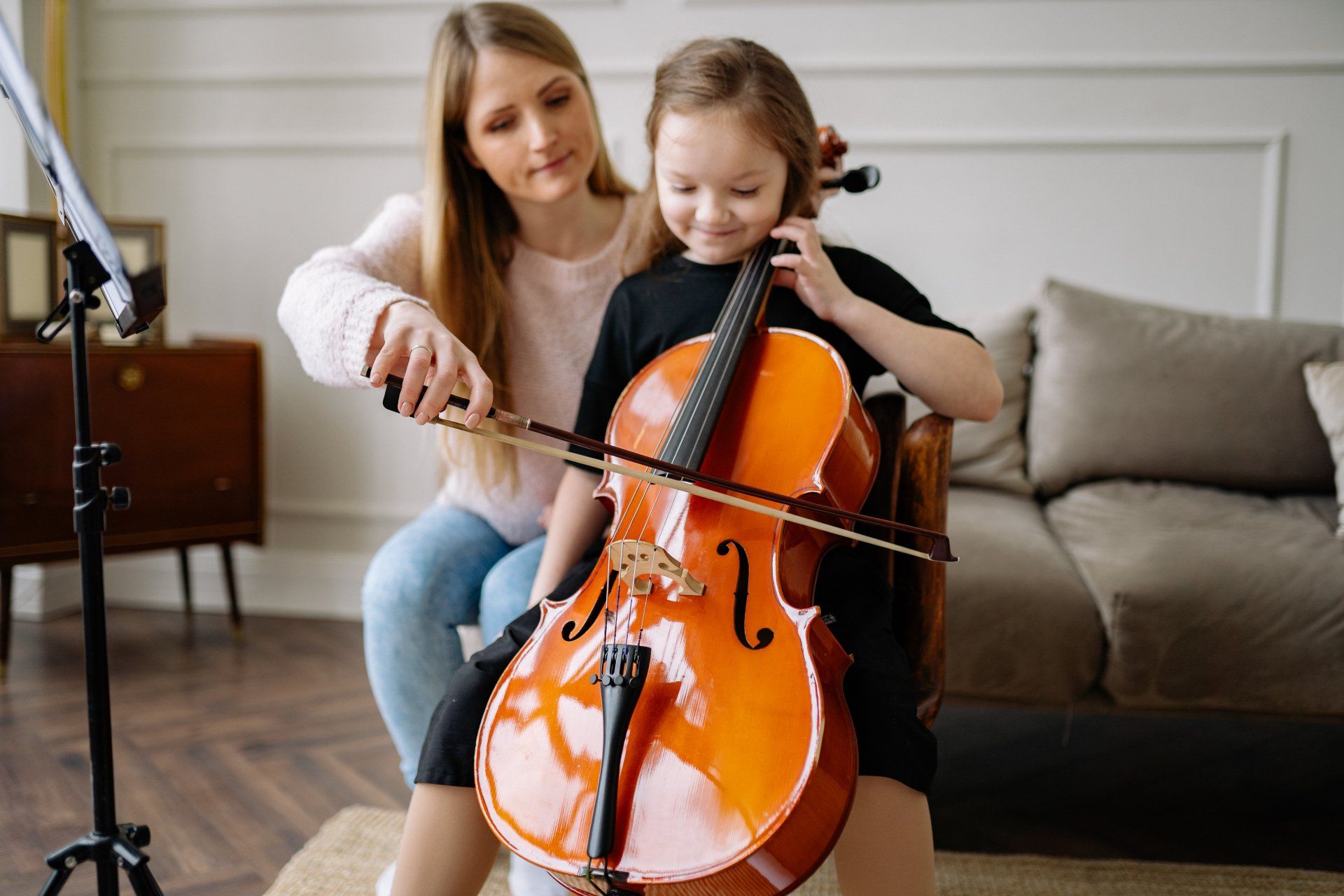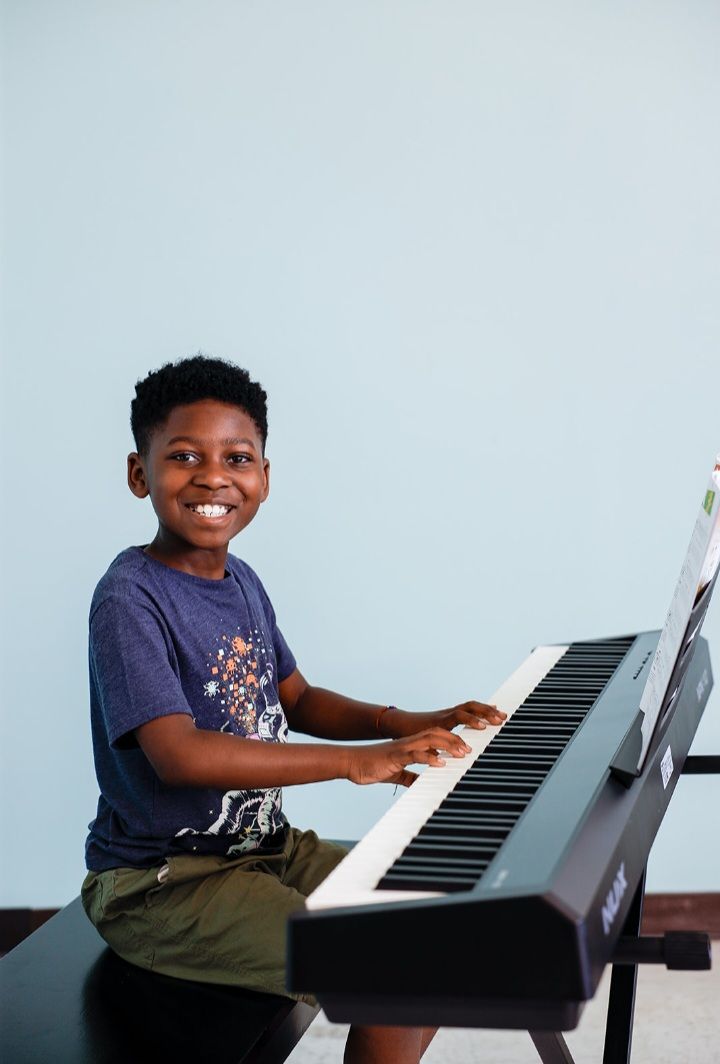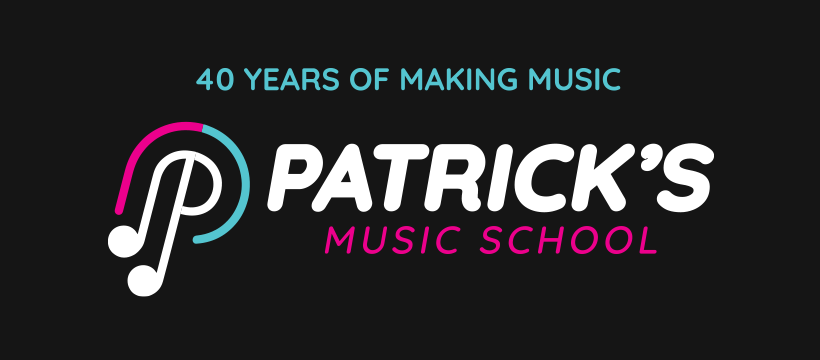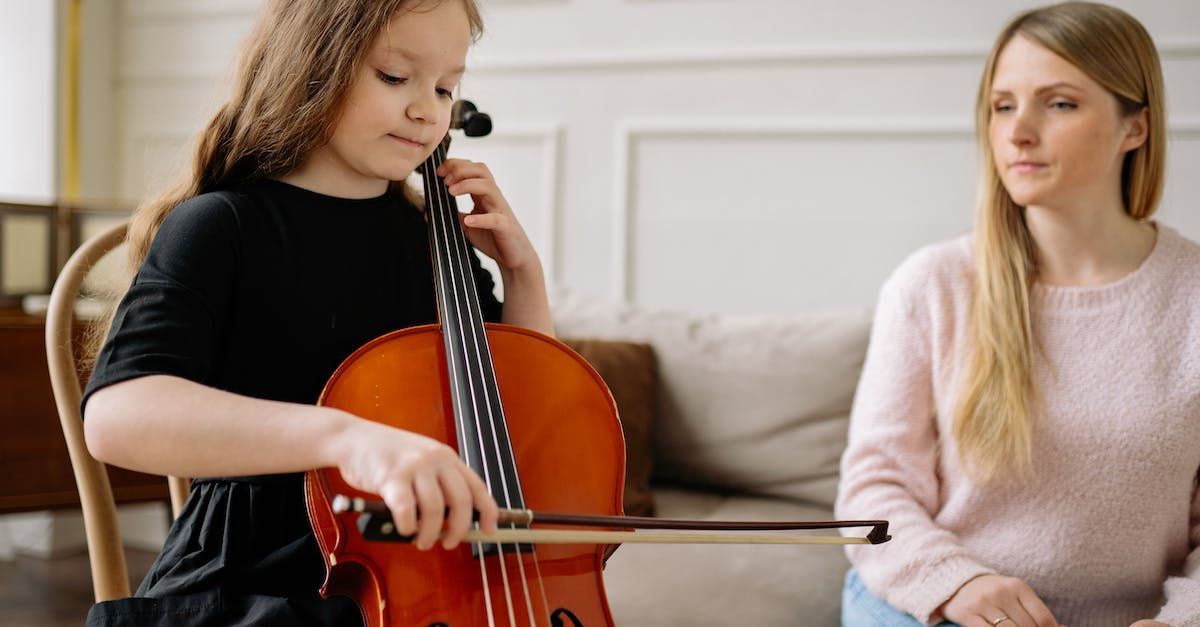Benefits of Private Music Lessons vs Group Lessons
Are you considering taking music lessons but not sure whether to opt for private lessons or group lessons?
We will explore the differences between private music lessons and group lessons, as well as the benefits of each.
From individual attention and customized curriculum to social interaction and cost considerations, we will help you determine which type of music lesson is right for you based on your learning style, goals, schedule, and budget.
Let's dive in and discover the best option for your musical journey!
What Are Private Music Lessons and Group Lessons?
Private music lessons and group lessons are two primary forms of music education where students receive instruction from a skilled instructor.
Private music lessons offer students personalized attention, allowing instructors to tailor lesson plans to the individual's specific needs and goals, fostering rapid skill development and deeper understanding of musical concepts.
On the other hand, group lessons provide a dynamic environment where students can collaborate, learn from their peers, and experience the joy of making music together. These interactions not only enhance social skills but also promote teamwork and create a sense of community among the learners.
Whether opting for private instruction to focus on personal growth or joining a group class to cultivate a sense of camaraderie, both avenues offer valuable opportunities for musical exploration and advancement.
What Are the Differences Between Private Music Lessons and Group Lessons?
Private music lessons and group lessons differ primarily in the level of individual attention and peer interaction they offer to students.In private music lessons , students benefit from personalized attention from the instructor, allowing for a customized learning experience tailored to their specific needs and skill level. This one-on-one approach enables the teacher to focus on the student's strengths and weaknesses, adapting the instruction to suit their pace and learning style.
On the other hand, group music lessons foster teamwork and collaboration among students. Group settings provide opportunities for students to interact with peers, engage in ensemble playing, and develop vital communication skills through music. The dynamic of group learning encourages students to support each other, fostering a sense of community and shared progress.
Individual Attention
Individual attention in private music lessons ensures that students receive personalized guidance and feedback from the instructor to enhance their learning experience.The unique aspect of private music lessons is the one-on-one interaction between student and teacher, allowing for a deeper level of understanding and progress. Instructors can tailor their teaching methods to match the student's learning style, focusing on their strengths and challenges. This personalized approach fosters a supportive environment where students feel comfortable asking questions and seeking clarification. Direct feedback provided immediately during the lesson helps students correct mistakes and refine their techniques efficiently. Such personalized attention is invaluable in nurturing a student's musical abilities and confidence.
Customized Curriculum
Private music lessons often feature a customized curriculum tailored to the student's skills, goals, and learning pace, providing a more personalized learning experience.By incorporating individualized lesson plans, music instructors can focus on strengthening specific weaknesses and honing the strengths of each student, nurturing a deep understanding and appreciation for music.
This tailored approach fosters a more engaging and effective learning environment, allowing students to progress at their own pace while receiving targeted feedback and guidance.
Flexibility in Scheduling
Private music lessons offer flexibility in scheduling, allowing students and parents to arrange lesson times that suit their schedules and commitments.Having the ability to schedule lessons at convenient times not only reduces stress for parents juggling work and family responsibilities but also enables students to engage in music education without feeling overwhelmed by rigid timetables.
This flexibility enables families to prioritize learning music amidst their busy lives, promoting a positive attitude towards music practice and performance.
It fosters a more personalized experience, as instructors can tailor lessons to individual needs and learning styles, enhancing the overall effectiveness of the music education process.
Cost
While private music lessons may incur higher costs compared to group lessons, the investment often translates into specialized feedback and tailored instruction that cater to individual skills.These personalized lessons provide students with one-on-one attention from experienced instructors who can identify specific areas for improvement and offer targeted guidance. Additionally , the ability to progress at a pace that suits the learner's needs can lead to more efficient skill development and a deeper understanding of music theory and techniques.
Private lessons often offer flexibility in scheduling, allowing students to tailor their music education around other commitments. The individualized focus on the student's progress can also enhance motivation and confidence, fostering a more enriching learning experience.
Social Interaction
Group music lessons foster social interaction among students, promoting teamwork, peer collaboration, and shared learning experiences in a supportive environment.Through engaging in group music lessons, students are not only able to enhance their individual musical skills but also develop essential social skills. By participating in ensemble practices, individuals learn the value of cooperation and communication, essential aspects in collaborative music-making. The diverse range of musical backgrounds within the group creates a dynamic environment where students can learn from each other's strengths and weaknesses, fostering a sense of unity and camaraderie.
What Are the Benefits of Private Music Lessons?
Private music lessons offer a range of benefits, including a personalized learning experience that enables faster progress and skill development.
Customized instruction tailored to the individual student's needs fosters a deeper understanding of musical concepts and techniques. This one-on-one approach allows the instructor to identify specific strengths and areas for improvement, leading to targeted guidance and practice. With undivided attention, students can clarify doubts instantly, refine their techniques, and progress at their own pace.
Private music lessons also provide a focused environment that minimizes distractions, enhancing concentration and musical absorption. The flexibility in lesson content and scheduling enables students to explore diverse genres, styles, and instruments, nurturing a well-rounded musical proficiency.
Personalized Learning Experience
A key benefit of private music lessons is the personalized learning experience that caters to individual skills and preferences, offering tailored instruction for optimal progress.During a private music lesson, the instructor can focus solely on the individual student 's needs, adapting the teaching style to suit their unique learning pace and musical interests. This one-on-one interaction fosters a deeper connection between the student and the music, allowing for a more immersive learning journey.
By customizing the curriculum based on the student's strengths and areas for improvement, private music lessons pave the way for personalized growth and skill development. This level of individual attention helps students overcome challenges and reach their full musical potential, ultimately enhancing their confidence and performance abilities.
Faster Progress
Private music lessons often lead to faster progress in skill development due to the focused learning environment and instruction tailored to the student's learning pace.
In a private music lesson setting, students benefit from the undivided attention of the instructor, allowing for customized guidance that addresses their specific strengths and areas for improvement. Through this personalized approach, musical concepts are explained in a way that resonates with the individual, enhancing comprehension and retention. The one-on-one setting fosters a sense of accountability and motivation, encouraging students to practice consistently and strive for musical excellence.
More Confidence
Private music lessons help build confidence in students, preparing them for performances and fostering constructive collaboration with their instructors.One of the key aspects of private music lessons is the personalized attention students receive, allowing them to work on their specific areas of improvement. This individualized approach enables instructors to tailor their teaching methods to each student's needs, offering customized guidance that can lead to significant progress.
In addition, private music lessons provide a safe and supportive environment for students to explore and express their musical abilities without fear of judgment. This nurturing atmosphere encourages students to take risks, experiment with new techniques, and ultimately grow both musically and personally.
Better Performance Opportunities
Private music lessons open doors to better performance opportunities for musicians, helping them overcome stage fright and excel in their musical endeavors.Music teachers in private lessons create a nurturing environment where students can develop their skills at their own pace, focusing on individual strengths and weaknesses. By tailoring lessons to each student, instructors can address specific technical challenges and guide aspiring musicians to refine their techniques. Private music lessons often provide personalized feedback, allowing students to track their progress and work towards achieving their musical goals. Through these tailored sessions, students can gain confidence, build a strong foundation, and unlock their full musical potential.
What Are the Benefits of Group Music Lessons?
Group music lessons present various advantages, such as learning from peers, engaging in group dynamics, and fostering a collaborative learning environment.-
Learning alongside peers in a group setting allows individuals to witness diverse skill levels and techniques, providing inspiration and motivation for improvement. This exposure to different approaches enhances one's musical understanding and creativity.
-
Engaging in group dynamics during music sessions encourages teamwork, communication, and mutual support. It builds a sense of camaraderie and shared progress, creating a supportive atmosphere for personal growth.
-
The collaborative nature of group music lessons cultivates a spirit of cooperation, where participants contribute to ensemble performances, harmonizing their individual roles for a unified musical experience.
Learning from Peers
Group music lessons encourage learning from peers, promoting collaborative practices and shared musical experiences among aspiring musicians.
Being in a group setting allows students to observe, interact, and perform with others who share their passion for music. Through ensemble experiences , individuals gain a sense of unity and develop interpersonal skills essential in musical collaborations.
In these classes, participants not only learn from the instructor but also from each other, bringing diverse perspectives and insights to the table. This shared learning environment fosters a supportive community where individuals can grow and improve together, forming lasting bonds through a common love for music.
Group Dynamics and Teamwork
Group music lessons foster group dynamics and teamwork, leading to the development of strong friendships and constructive collaboration among students.
Through shared musical experiences and collaborative learning opportunities, individuals within a music ensemble not only refine their musical skills but also cultivate a sense of belonging and camaraderie. Working towards a common goal of creating harmonious melodies and synchronized rhythms helps students appreciate the value of cooperation and collective effort in achieving excellence.
Cost-Effective
Group music lessons are often considered cost-effective, offering access to structured music programs and a supportive community environment for aspiring musicians.
These group music lessons provide a platform for individuals to learn and grow together, fostering a sense of camaraderie and mutual support. Students benefit not only from the guidance of experienced instructors but also from the peer-to-peer interaction that enhances their learning experience.
The cost-effectiveness of group lessons allows aspiring musicians to receive quality instruction at a fraction of the cost of private lessons. This makes music education more accessible and inclusive, catering to a wider audience of music enthusiasts.
Fun and Social Environment
Group music lessons provide a fun and social environment for students, fostering serenity, peer interaction, and a sense of community within the music learning space.In these educational settings, students not only cultivate their musical skills but also build lasting relationships with their peers, creating a vibrant musical community. Personalized feedback from instructors and fellow students enhances the learning experience, allowing for individual growth while celebrating collective achievements. The group dynamic offers a supportive atmosphere where students can collaborate, learn from one another, and share their passion for music.
Which Type of Music Lesson is Right for You?
Selecting the right type of music lesson depends on factors such as your learning style, goals, schedule constraints, and budget considerations.For those who are visual learners, music theory classes might be a good fit as you can see the concepts written down.
Private music lessons offer personalized attention, allowing you to progress at your own pace according to your goals. If you have a hectic schedule, online music lessons provide flexibility since you can often schedule them at your convenience. Group lessons are a cost-effective option for those on a limited budget, plus they offer a social aspect and the chance to learn from peers. Considering these elements will help you choose the most suitable music lesson type for your individual needs.Consider Your Learning Style
When deciding between private and group music lessons, consider your learning style to ensure that the lesson format aligns with your preferences for tailored instruction.Each individual has a unique way of absorbing information when it comes to music. Understanding how you learn best is crucial in making this decision. In private lessons, the focus is entirely on you, allowing for personalized attention and feedback tailored to your specific needs. This one-on-one approach can be highly effective for those who thrive on individualized learning experiences.
On the other hand, group lessons offer a collaborative environment where you can interact with peers, learn from others, and share experiences. This setting can be beneficial for individuals who enjoy social learning and draw motivation from group dynamics.
Assess Your Goals
Evaluate your musical goals to determine whether private lessons or group lessons align better with your aspirations for skill development and participation in performance programs.When deciding between private and group lessons, it's important to consider the level of individual attention you require. Private lessons offer personalized instruction tailored to your specific needs, allowing for focused skill enhancement. On the other hand, group lessons provide a collaborative environment where you can learn from peers, develop ensemble skills, and gain valuable experience in teamwork.
Participating in performance programs can significantly enhance your musical growth. Private lessons may offer more solo performance opportunities, enabling you to refine your technique and stage presence. In contrast, group lessons often involve ensemble performances that help you strengthen your ability to play in harmony with others and engage with a larger audience.
Evaluate Your Schedule and Budget
Consider your schedule and budget constraints when deciding between private and group music lessons to ensure that you can commit to the required lesson frequency and financial investment.Choosing between private and group music lessons involves careful evaluation of several key factors.
- Private lessons offer the advantage of personalized instruction , tailored specifically to individual learning styles and goals. This one-on-one attention can significantly accelerate progress and skill development.
- On the other hand, group lessons provide a dynamic environment for social interaction and peer learning, fostering a sense of community among musicians.
Keep in mind that private lessons typically come at a higher cost, reflecting the customized approach and undivided attention from the instructor. In contrast, group lessons are more cost-effective but may lack the individualized focus that some learners require.













